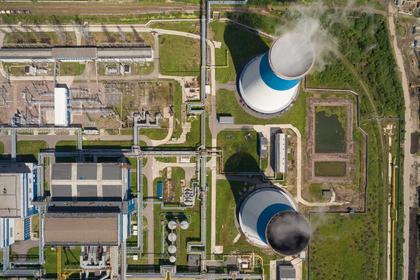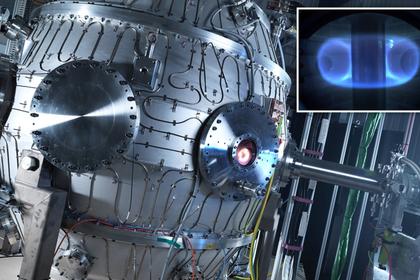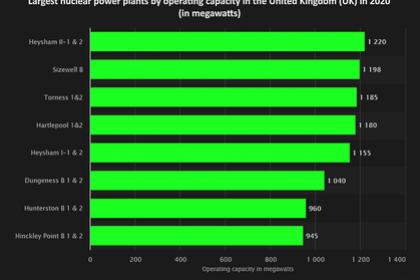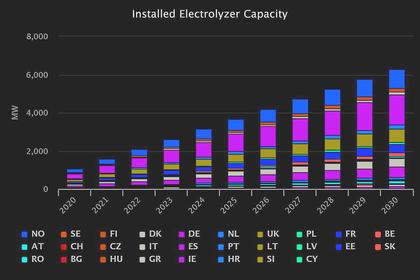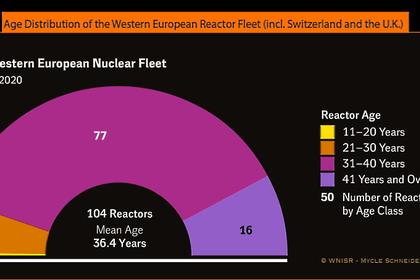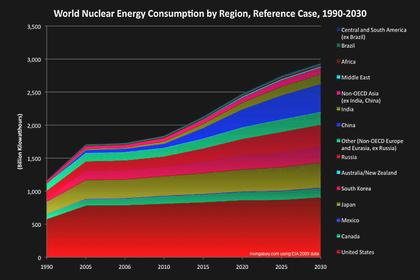
NUCLEAR ELECTRICITY COSTS WILL DOWN
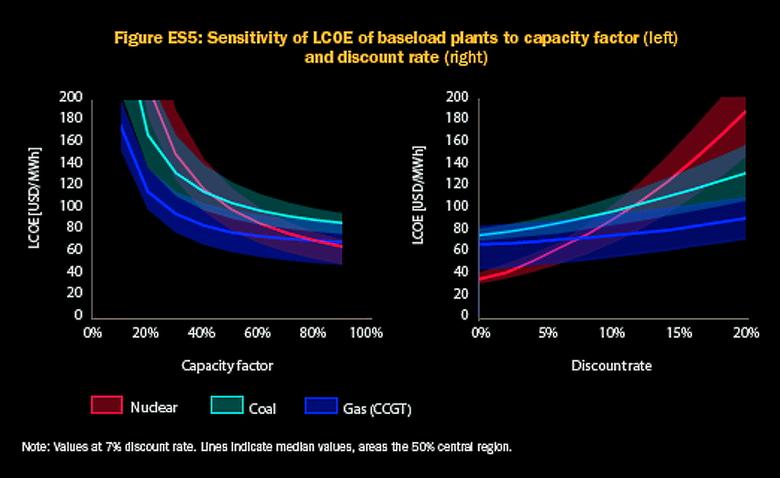
WNN - 09 December 2020 - The levelised costs of electricity generation of low-carbon generation technologies are falling and are increasingly below the costs of conventional fossil fuel generation, according to a report by the OECD Nuclear Energy Agency (NEA) and the International Energy Agency (IEA). The cost of electricity from new nuclear power plants remains stable, yet electricity from the long-term operation of existing plants constitutes the least cost option for low-carbon generation. Nuclear electricity is expected to have lower costs in the near future, the report says.
Projected Costs of Generating Electricity: 2020 Edition, released today, is the ninth edition of the IEA and NEA's joint study of the levelised lifetime costs of generating electricity for a broad set of generation technologies. The 2020 study focuses on the expected costs of technologies being built now and commissioned by 2025.
The forward-looking study calculates the levelised cost of electricity (LCOE) using discount rates of 3%, 7% and 10%, using a combination of generic, country-specific and technology-specific assumptions agreed by a steering expert group to calculate costs at the plant level. The report is based on data for 243 plants in 24 countries - both OECD and non-OECD - including fossil fuel, nuclear energy and a range of renewable technologies, such as wind and solar, hydro and biofuels.
The LCOE calculations are based on a levelised average lifetime cost approach, using the discounted cash flow method. Costs are calculated at the plant level, and therefore do not include transmission and distribution costs. The LCOE calculations also do not capture other systemic costs or externalities beyond plant-level CO2 emissions.
Despite differences in regional, national and local conditions, the report finds that low-carbon generation is overall becoming increasingly cost competitive. Renewable energy costs have continued to decrease in recent years and the costs of wind and solar PV are now competitive with fossil fuel-based electricity generation in many countries.
Electricity from nuclear power plants is also expected to have lower costs in the near future, the report says. Due to cost reductions stemming from the lessons learned from first-of-a-kind projects in several OECD countries, new nuclear power will remain the dispatchable low-carbon technology with the lowest expected costs in 2025. The report also finds that extending the operation of existing nuclear power plants, known as long-term operation (LTO), is the most cost-effective source of low-carbon electricity. "Even at lower utilisation rates, a potential scenario for nuclear units in systems with high shares of variable renewables, costs are below those of new investments in other low-carbon technologies."
Commenting on the findings of the report, World Nuclear Association Director General Sama Bilbao y León said: "Investing in extending the life of the current fleet of nuclear reactors should be a no-brainer. First, it is the lowest-cost electricity option, second it can make an immediate and significant contribution to job creation in the context of the post-COVID economic recovery, and third - and just as important - many countries will have a hard time meeting their decarbonisation targets without the contribution of existing nuclear plants."
The report notes hydropower can provide a similar contribution as nuclear at comparable costs, but it remains highly dependent on the "natural endowments" of individual countries.
At the assumed carbon price of USD30 per tonne of CO2 and pending a breakthrough in carbon capture and storage, coal-fired power generation is slipping out of the competitive range, the report says. The cost of gas-fired power generation has decreased due to lower gas prices and "confirms the latter's role in the transition".
The IEA and NEA say any comparison of generation costs today must also consider rapidly changing power systems. As in previous editions, this report uses the LCOE as "a well-established, uniquely transparent and intuitive metric, widely used in policy making, modelling and public discussion".
As the shares of wind and solar PV in power systems grow, the value of the electricity generated by a particular technology in a particular power system also changes, they say. The report therefore also presents a new complementary metric, the "value-adjusted" LCOE to account for these impacts. Costs associated with storage, fuel cells and LTO of nuclear power plants are also included in the analysis for the first time.
Also for the first time, the report is accompanied by an online Levelised Cost of Electricity Calculator. This calculator allows for easy download of all data tables in the report, and enables the user to examine the impact of changing select variables, such as the discount rate, fuel prices or the cost of carbon.
One of five "boundary chapters" included in the report presents an up-to-date view of the potential role of nuclear energy in decarbonised electricity systems. Authored by the NEA, it says nuclear power can support cost-effective decarbonisation in several complementary ways.
Firstly, LTO remains one of the most cost-competitive options to generate low-carbon dispatchable electricity in many regions with a LCOE ranging between USD30 and USD50 per megawatt-hour. Secondly, thanks to the experience gained with recent first-of-a-kind projects, new nuclear can enter a phase of rapid learning in western OECD countries with near-term overnight costs reductions of 20% to 30% compared to today's levels. Thirdly, small modular reactors propose cost and risk reductions with factory built construction and higher affordability of the projects. Countries envisaging to pursue the nuclear option will benefit from the mobilisation of these three complementary solutions, it says.
"The electricity sector is essential for the functioning of modern societies, as the COVID-19 crisis has highlighted yet again, and also has a crucial role to play in reducing global emissions," said IEA Executive Director Fatih Birol. "Investing in affordable low-carbon electricity generation technologies supports economic growth but is also necessary if we are to put global emissions into structural decline."
In order to decarbonise energy sectors, "knowing the costs and system value of different electricity generation options and, in particular, of low-carbon generation, is indispensable", the report says.
"Achieving carbon neutrality will require deep decarbonisation of the electricity generation sector," Bilbao y León said. "While electricity systems have largely been able to accommodate the rising share of variable renewable generation to date, further increasing their share will bring significant challenges with regards to reliability, stability, resilience and cost. Nuclear generation will continue to have a vital role in ensuring system stability in a cost effective, low-carbon generation mix."
-----
Earlier:
